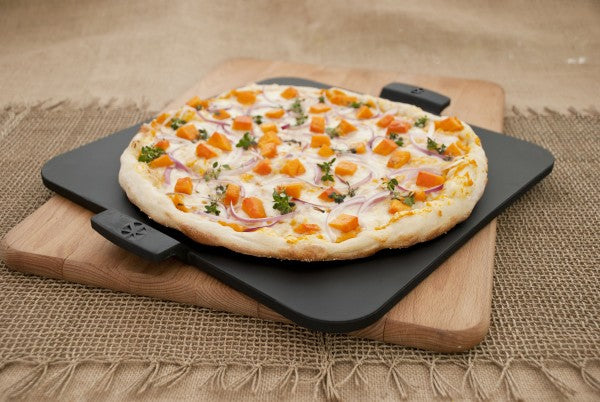As a kitchen professional, you certainly know the value of using a baking stone to achieve that perfect crust on your breads and pizzas. However, knowing how to cool a baking stone safely is equally important to preserve the stone's integrity and longevity. In this guide, we'll explore safe methods for cooling your baking stone, while also discussing why this step is crucial.
It's essential to handle your baking stone with care, especially when transitioning from high baking temperatures to room temperature. Rapid changes in temperature can cause thermal shock to the stone, leading to cracks or breakage. Here, we will highlight strategic ways to avoid these pitfalls and maintain the condition of your baking stone.

Understanding the Composition of Baking Stones
Baking stones, often made from cordierite or ceramic, are designed to withstand high temperatures but are sensitive to thermal shock. Cordierite, known for its remarkable durability, is a preferred choice among professionals. You can learn more about these materials and their heat-handling capacities in our detailed guide on enameled cast iron. By knowing the composition of your stone, you can better strategize its cooling process.
Safe Cooling Practices for Baking Stones
Avoid Sudden Temperature Changes
The most critical aspect of cooling a baking stone is to avoid rapid changes in temperature. Immediately after baking, resist the urge to set the hot stone on a cool countertop or dunk it into water. Instead, let it cool gradually by turning off the oven and leaving the stone inside. This method allows the stone to adjust to room temperature over time.
Natural Air Cooling
Another effective strategy is to let the stone cool down naturally in the oven with the door slightly ajar. This approach prevents direct exposure to cooler air, thus minimizing the risk of thermal shock. For professionals frequently using baking stones, having multiple stones on rotation can be beneficial, allowing each stone ample time to cool safely without downtime between bakes.
Handling and Maintenance Tips
Beyond cooling, proper handling and maintenance of your baking stone is crucial. Ensure your stone is clean and dry before heating, as moisture trapped in the stone can expand and crack it under high heat. Refer to our comprehensive guide on cleaning kitchen equipment for best practices that also apply to baking stones.
Regular Check-up and Storage
Regular inspection of your baking stone for cracks or damage will help in preventing sudden breaks during use. Store your stone in a cool, dry place, and avoid stacking heavy cookware on it, which can stress and crack the stone. For further information on differentiating kitchen materials, you can explore types of kitchen materials.

FAQs
-
Why is it important to cool a baking stone slowly?
Cooling slowly prevents thermal shock, which can crack or break the stone due to sudden temperature changes.
-
Can I wash my baking stone immediately after use?
No, washing it immediately with cold water can cause it to crack. Allow it to cool completely first.
-
What should I do if my baking stone cracks?
Unfortunately, a cracked stone cannot be repaired. It is best to replace it to ensure safety and performance.
For additional insights on baking stones, you might find this resource from breadandbuzz.com valuable. Implement these guidelines to maintain your baking stone, ensuring it remains a staple in your kitchen for years to come.
This article contains affiliate links. We may earn a commission at no extra cost to you.






Leave a comment
This site is protected by hCaptcha and the hCaptcha Privacy Policy and Terms of Service apply.